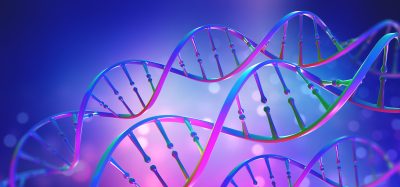New organoid model of neuroendocrine tumours developed
Posted: 13 December 2023 | Drug Target Review | No comments yet
NETs require epidermal growth factor to grow, meaning that inhibiting EGF receptors could treat these types of tumours.

A way to grow samples of different types of neuroendocrine tumours (NETs) in the lab has been discovered by The Organoid Group (Hubrecht Institute) and the Rare Cancers Genomics Team (IARC/WHO). The scientists, while producing their new model, found that some pulmonary NETs require the protein Epidermal Growth Factor (EGF) to grow. These types of tumours may therefore be treatable using inhibitors of the EGF receptor.
NETs are relatively rare tumours that can be slow growing, but some NETs can be aggressive and difficult to treat. Currently, it is not possible to predict which tumours will become aggressive, and there are very few models to study NETs in the lab, which limits research into this type of tumour.
Therefore, the researchers needed to develop new models. They derived cells from patients with NETs and were able to culture them into organoids, which mimic the behaviour of actual NETs. The new model is the first organoid model of the disease.
It was found that some pulmonary NETs need EGF to grow. Co-first author of the paper Dr Talya Dayton said: “If we inhibit the receptor for EGF, some organoids die. Apparently, these organoids are dependent on EGF for their survival…We need further research to confirm our findings, but this may indicate that patients with EGF-dependent NETs could be treated with inhibitors of the EGF receptor.”
Inhibitors of the EGF receptor are already a course of treatment for other types of tumours.
It is surprising that some NETs turn out to be dependent on EGF, as tumours are usually considered as independent of growth factors. Dr Dayton explained: “We think that their EGF-dependence might explain, in part, why some of these tumours grow slowly. We also think this might mean that one of the ways in which NETs can become aggressive is by becoming growth-factor independent. If they no longer need the growth factor, their growth may accelerate.”.
These new models give a new way to study the disease in the lab. Dr Dayton concluded: “This allows us and other scientists to understand the biology of these tumours so we can hopefully find effective therapies.”
This study was published in Cancer Cell.
Related topics
Cancer research, Drug Targets, Organoids
Related conditions
Cancer Research, neuroendocrine tumours
Related organisations
Organoid group (Hubrecht Institute), Rare Cancers Genomics Team (IARC/WHO)
Related people
Dr Talya Dayton (Hubrecht Institute)







